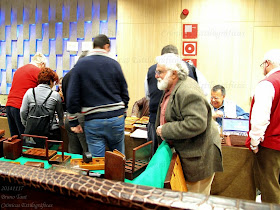So, when the decoration is more important, the whole set of rules under which a stylophile analyzed a pen is turned upside down. Stylophiles greatly value the originality of all the components of the pen—nib and feed must correspond to that particular model, the clip could also have been replaced… And somehow the pen should be known to have existed (this might be tricky at times, but can be applied to the vast majority of pens).
But for the maki-e buff, all that is secondary. The quality of the decoration is paramount. Therefore, is there such a thing as a fake maki-e decorated pen? No, dare I say, as long as the maki-e is there (of course, there exist some maki-e-like decoration using some other less elaborated techniques that hold a lot less value, but they are not maki-e). In fact, this scenario favors the creation of one-of-a-kind pens based on almost any pre-existing model. There are, nowadays as in the past, maki-e artisans who decorated pens on demand, with no knowledge, of course, of the manufacturer.
An obvious side effect of this phenomenon is the proliferation of organized customizations—Pelikan, Parker, Danitrio, Loiminchay… and, of course, the big three, Pilot-Namiki, Platinum-Nakaya, and Sailor. Indeed, this is an easy and safe way to add value to any given pen. As well as a convenient costume to pass as Japanese, which seems another way to add value.
Maybe we all –stylophiles and those fond of maki-e pens-- should remember that maki-e is an old decorative technique that long predates fountain pens. And narrow cylindrical shapes are rarely the most convenient canvas for any purpose.
On my side, and this is just a personal option, I insist in thinking that a pen is a pen—and is a pen! And no decoration makes it any better, or any worse, as a pen. Some people, though, do not think like me.
Romillo Essential Black – Pilot Iroshizuku Kon-peki
Bruno Taut
Madrid, December 14th 2014
labels: mercado, Japón, estilofilia, maki-e
Bruno Taut
Madrid, December 14th 2014
labels: mercado, Japón, estilofilia, maki-e




















































